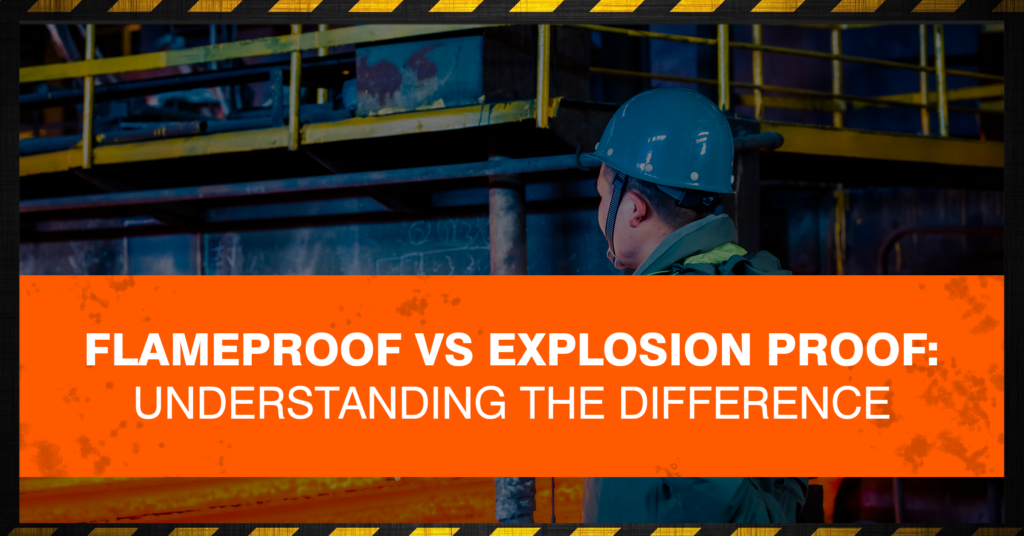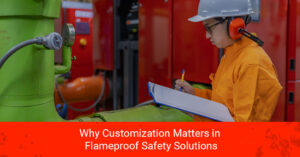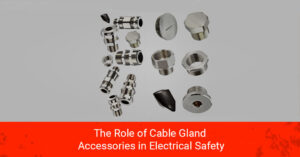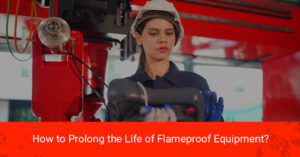In this blog, we will learn about Flameproof Vs Explosion proof: Understanding the Difference in detail. Safety must always come first, especially in dangerous areas. Flameproof and explosion-proof safety systems play a key role in ensuring protection. Even though these terms are occasionally used synonymously, there are clear distinctions between them when it comes to testing, certification, and standards.
Despite their similar-sounding names, flameproof products and explosion-proof products are not the same. We will simplify this by going over how they’re tested, how their specifications vary, what markings to look for, and how much protection each one provides.
By the end of this article, you should have a good idea of when and where each system is used. You will also understand why these systems are critical in preventing dangerous incidents. Whether you work in a hazardous industry or are simply interested in safety precautions, this article will provide valuable insights into protecting lives and property.
Flameproof Systems
The zone system described by the IEC (International Electrotechnical Commission) rules is one of the several flameproof systems that adhere to international standards and are extensively used in India.
Additionally, they are authorised for usage in the US or Canada by US government organisations. These systems use the zone classification approach, which divides hazardous regions into zones according to the presence of flammable vapours.
IEC 60079-1, which focuses on the ex-db marking tech criteria for IEC certification, is a crucial standard for flameproof devices. The applicable standard for goods requiring zone-based certification in the United States is UL 60079-1, while the Canadian equivalent is CSA C22.2 No. 60079-1.
Flameproof systems classify gases into groups IIA, IIB, and IIC, with IIC being the most ignitable. This classification helps determine the level of protection needed in different hazardous environments. You can also read our blog Misconceptions about Flameproof Products for a deeper understanding of Flameproof products.
Explosion-Proof Systems
Explosion-proof systems, on the other hand, adhere to the class/division system and are only designed for use in the United States.
The classification of hazardous areas is divided into classes and divisions, with the first class and division suggesting the usage of an explosion-proof protection mechanism.
Explosion-proof systems are governed by Canadian CSA C22.2 No. 30 and UL 1203 in the United States. Explosion-proof markings indicate the gas group, T-class, and the usage of the “XP” designation, showing conformity with explosion-proof procedures, in addition to class and division.
Flameproof vs Explosion Proof Systems - Understand the difference
Flameproof and explosion-proof devices are crucial for guaranteeing safety in risky areas all over the world. Understanding the variations between these systems is essential, particularly for usage in Indian firms:
1. Testing
Explosion-proof systems, as mandated by the NEC protocol in the United States, are built to last. They are subjected to extensive testing to ensure that they can sustain pressures up to four times that of a gas explosion.
In contrast, flameproof systems that adhere to Europe’s IEC procedure focus on testing overpressure, which is typically limited to 1.5 times regular pressure.
2. Markings
System markings provide insightful data. American systems for detecting explosives display class, division, group, T-class, and the “XP” abbreviation.
With designations like EX for hazardous sites, DB for flameproofing, gas group classifications (like IIC), and temperature classes (T1 to T6), flameproof systems in Europe adhere to the zone system.
3. Protection Covers
The manner in which protection covers are fastened varies greatly. Explosion-proof systems sometimes employ joints, threaded covers, or bolts that may be fitted on-site and easily modified. Special equipment and factory drilling may be required for flameproof enclosures, limiting on-the-fly changes.
4. Heat Rise
One important characteristic that distinguishes these systems is heat rise. Heat rise becomes less important in explosion-proof systems since they concentrate on preventing explosions through sturdy design.
In order to safeguard interior components, flameproof systems carefully control heat. Explosion-proof systems emphasise precision design in comparison to flameproof systems when it comes to wiring, which also varies.
To sum up, both flameproof and explosion Proof products work to protect against potential dangers, but they differ in terms of testing, markings, protection covers, and heat management. For industries implementing safety measures in their particular regions, it is essential to comprehend these distinctions.
Conclusion on Flameproof Vs ExplosionProof
Knowing the distinctions between flameproof and explosion-proof systems is critical for assuring safety and compliance with local standards in hazardous situations. While these two names are frequently used interchangeably, they serve different purposes and have different properties.
Flameproof equipment and systems are more widespread in Europe, adhere to IEC standards, and are tested for overpressure, whereas explosion-proof systems are more frequent in North America, adhere to NEC standards, and are built to handle higher gas explosion pressures.
The selection of these systems is frequently influenced by the individual area and local requirements. Both methods are designed to keep explosive responses under control and to prevent risks during an explosion. Explosion-proof systems are more pressure resistant, although flameproof systems may require manufacturer-drilled enclosures and have heat rise problems.
Whether you use flameproof or explosion-proof equipment, maintaining safety is critically necessary in dangerous areas. In order to prevent potentially disastrous accidents, these systems are essential. You can make wise selections by taking into account local circumstances and particular requirements if you are aware of their differences.
Bharat Flameproof is an expert in manufacturing flameproof & explosion-proof products. We are the industry leaders and are known for delivering top-quality flameproof and explosion-proof equipment such as flameproof panels, flameproof control stations, flameproof lights, flameproof fans, flameproof distribution board, and many more.
You can protect machinery and workers in dangerous environments by prioritizing safety and choosing the right solution, which lowers the possibility of accidents and reduces possible risks. Safety must always come first, and making the proper decision can help everyone live in a safe environment and prevent injury.
Hope you found this comparison between flameproof and explosion-proof helpful.
Flameproof vs. Explosion-Proof Systems
Both flameproof and explosion-proof systems are designed to operate safely in hazardous environments where explosions are a risk. Here’s a detailed comparison table between the two.
|
Aspect |
Flameproof Systems |
Explosion-Proof Systems |
|
Testing |
Tested based on IEC standards, typically up to 1.5 times regular pressure. |
Subjected to extensive testing according to NEC standards, can withstand pressures up to four times that of a gas explosion. |
|
Markings |
Zone system with labels like EX, DB, gas group classifications (IIA, IIB, IIC), and temperature classes (T1 to T6). |
Class, division, group, T-class, and “XP” abbreviation. |
|
Protection Covers |
Often requires manufacturer-drilled enclosures, less flexible. |
Employ joints, threaded covers, or bolts that may be fitted on-site and easily modified. |
|
Heat Management |
Carefully control heat to safeguard interior components. |
Focus on preventing explosions through sturdy design. |
|
Industry Usage |
Oil and gas, chemical processing, pharmaceuticals, mining. |
Petrochemical, refineries, food processing, manufacturing. |
|
Installation Flexibility |
Relatively less adaptable due to factory-drilled enclosures. |
More adaptable with field-modifiable covers and connections. |
|
Equipment Cost |
Relatively lower initial equipment cost. |
Often higher initial equipment cost. |
FAQs
Flameproof equipment is utilised in locations where potentially explosive gases are present, such as inside a motor. Explosion-proof equipment is used in locations where external explosions are possible, such as near volatile gas or dust.
Explosion-proof means it can survive explosions outside without igniting, whereas flameproof means it can manage explosions inside safely.








